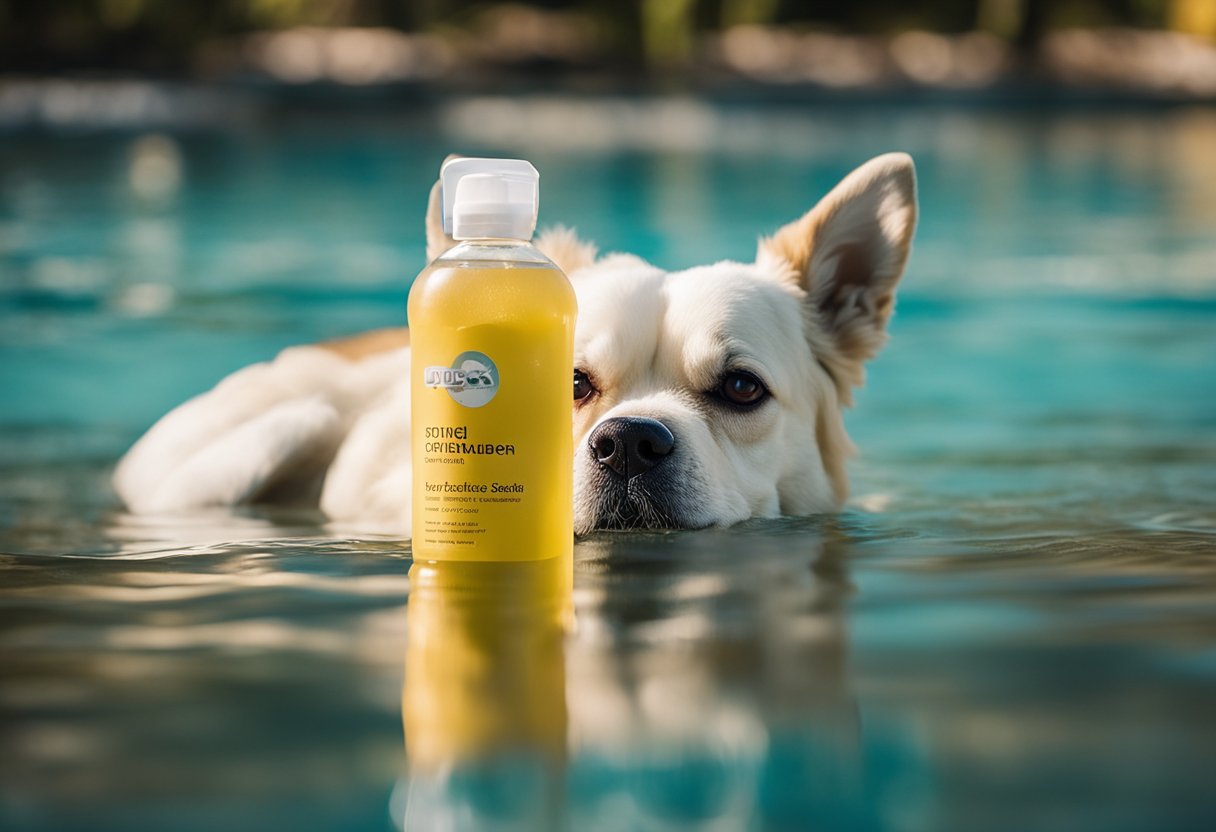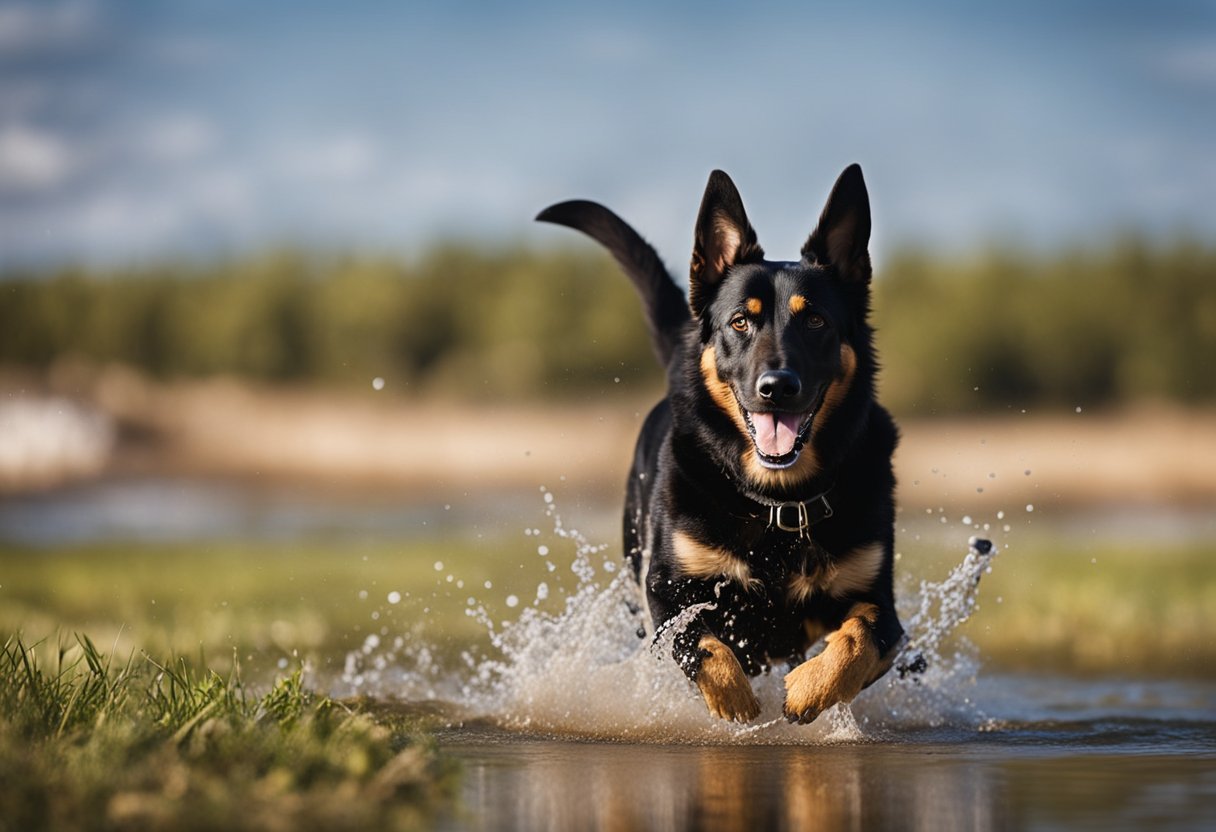Rawhide for dogs is a popular treat that many pet owners provide for their canine companions. Rawhide is made from the inner layer of cow or horse hides that have been cleaned and processed. While many dogs enjoy the taste and the experience of chewing on rawhide, it can sometimes be too hard for puppies, senior dogs, or those with dental issues. Softening rawhide makes it easier for these dogs to enjoy the chewing experience without risking damage to their teeth and gums.

To ensure safety and enhance the benefits of rawhide chews, appropriate preparation methods for softening rawhide must be employed. There are several techniques available for softening rawhide, each suited for various preferences and situations. Keeping a close watch on your dog while they enjoy their rawhide treat is important, as it can present choking hazards if not properly softened or if large pieces are bitten off. Ensuring that the softened rawhide is stored correctly will help maintain its quality and prevent spoilage.
Key Takeaways
- Rawhide should be softened to make chewing safer, especially for dogs with dental sensitivities.
- Multiple methods are available for softening rawhide, with soaking and heating being the most common.
- Close monitoring and proper storage of softened rawhide ensure safety and longevity of the treat.
Why Soften Rawhide?

Softening rawhide for dogs is a measure to enhance the safety and health benefits of this popular canine chew. When rawhide is softer, it poses less of a choking hazard. This is particularly important for puppies and older dogs, whose chewing abilities may not be as strong.
Dental health is another key aspect to consider. As dogs chew on rawhide, it can aid in the maintenance of healthy teeth and gums by scraping away plaque and tartar buildup. Softer rawhide is more effective in this role, as it allows for longer, more thorough chewing without the risk of breaking into hard, sharp pieces that might injure the oral cavity.
However, a primary concern with rawhide chews is the potential for digestive issues. Pieces of hard rawhide are not easily digested, and if swallowed, can lead to blockages. Softening the rawhide makes it more digestible, and thus, reduces the chance of digestive complications.
- Chewing benefits: Satisfies the natural urge to chew, promotes oral health.
- Safer chewing experience: Lessens the risk of dental fractures or pieces lodging in the throat.
- Better digestibility: Softer pieces are less likely to cause obstructions in the gastrointestinal tract.
In summary, softening rawhide is beneficial for chewing satisfaction, dental health, and overall digestive safety. It ensures dogs can enjoy their chews without unnecessary risks to their health and well-being.
Choosing the Right Rawhide

Finding the ideal rawhide for your dog involves understanding size, quality, and safety. This ensures your pet benefits from the natural urge to chew without the risks.
Selecting Size and Thickness
Rawhide comes in various sizes and thicknesses. Small dogs and puppies typically require thinner, smaller pieces they can easily manage, while large dogs may need thicker, larger rawhide pieces to satisfy their chewing needs. Always monitor your dog with any new chew to prevent choking hazards.
Understanding Rawhide Quality
Quality is crucial when selecting rawhide. High-quality rawhide, often made from cow or horse hides, should be free from excess chemicals and flavorings. Look for clear packaging information that specifies the source and processing of the rawhide.
Identifying Safe Rawhide Options
Safety is a top priority. Choose rawhide chews that are digestible and unlikely to splinter or cause blockage. Ensure any product you pick minimizes choking hazards and the potential for bacterial growth.
Alternatives to Rawhide
Not all chews must be rawhide. Consider safe alternatives to rawhide such as bully sticks or beef tendon. These provide similar benefits and are often more digestible, with enzymes like proteolytic enzymes to prevent tartar buildup.
Considerations for Puppies and Aging Dogs
Puppies, especially teething puppies, and older dogs have specific needs. Their rawhide should be soft enough to not damage sensitive gums or weak teeth while still offering mental stimulation. Consider softening rawhide for dogs who can’t handle the regular product.
Preparing Rawhide for Softening

Before softening rawhide chews for dogs, it is essential to prepare the rawhide properly to ensure it reaches the desired texture and retains moisture. Here are some steps to prepare rawhide:
- Cleaning: Begin by wiping down the rawhide with a clean cloth to remove any debris.
- Soaking: Submerge the rawhide in a bowl of warm water. The soaking process is critical for softening the rawhide and should be done for several hours.
- Adding Substances:
- To enhance the softening effect, consider adding a small amount of vinegar to the water, which can help break down the rawhide more effectively.
- Alternatively, natural oils can be used to add moisture and further soften the rawhide.
Methods of Preparing Rawhide:
- Cold Soak:
- Place in water overnight.
- Ideal for gradual softening.
- Warm Soak:
- Use warm (not hot) water to speed up the process.
- Duration: 30 minutes to a few hours.
Cautionary Notes:
- Temperature: Avoid using boiling water as it could damage the rawhide’s structure.
- Microwave Use: Microwaving rawhide is not recommended as it can unevenly distribute heat and potentially ruin its texture.
For individuals interested in the effects of different soaking solutions, the containment of calcium in bones makes rawhides strong, and dissolving calcium using additives like vinegar may be beneficial. By following these procedures, one can ensure a safer and more enjoyable chewing experience for their pet.
Methods for Softening Rawhide

To ensure your dog can enjoy their chew safely and comfortably, it’s important to soften rawhide. Using the appropriate method can make rawhide more pliable and easier to consume.
Soaking in Water
Soaking rawhide in water is a simple and effective way to add moisture and make it softer. Submerge the rawhide in warm water for about 30 minutes to an hour.
Using Oils and Broths
Enhance the palatability of rawhide by soaking it in a mixture of oils or flavorful broths such as chicken or beef broth, which also softens the material.
Boiling Technique
The boiling method involves simmering rawhide in boiling water for 30 minutes to soften it. It’s a quicker way to ensure rawhide becomes pliable.
Microwave Method
Short bursts of microwaving can soften rawhide chew effectively. Make sure to wet the rawhide first and heat it in the microwave for short intervals, monitoring closely to prevent overheating.
Natural Softening Methods
Natural methods involve using the moisture from your dog’s own saliva as they chew on the rawhide, which gradually makes it more pliable and promotes natural digestion.
Freezing for Texture Variation
Freezing the rawhide creates a varied texture that becomes chewy as it thaws in the dog’s mouth. This can provide additional chewing stimulation and help soften the rawhide.
DIY Flavor Enhancements
Creating DIY flavor enhancements involves adding palatable substances like peanut butter or other flavorings to the rawhide, encouraging chewing and natural softening.
Commercial Softening Solutions
Pet stores offer commercial products designed to soften rawhide. These solutions often require simply spraying or wiping the rawhide with the conditioner to make it more pliable.
Maintenance After Softening
Once the rawhide is softened, store in a dry place to maintain the added moisture. Regularly clean and monitor your dog’s rawhide chew, replacing if it becomes too small or risks breaking into pieces.
Dental Health and Chewing Stimulation
Chewing on rawhide is more than just a way to keep dogs occupied; it plays a crucial role in maintaining dental health. When dogs chew, the mechanical action helps to scrape away plaque and tartar buildup on their teeth. This process is essential for preserving healthy teeth and preventing gum disease.
- Benefits for Teeth and Gums:
- Reduces plaque
- Minimizes tartar
- Strengthens gums
- Prevents periodontal disease
Nevertheless, not all rawhides are suitable for every dog. It’s important for pet owners to select the appropriate size and type of chew toy for dogs to prevent choking hazards and ensure the rawhide is effectively contributing to oral health.
Choking Hazards and Monitoring:
Always supervise your dog with chew toys to prevent choking. The size of the rawhide should correlate with the size of your dog. Larger breeds might swallow small rawhides whole, which could lead to choking or gastrointestinal blockages.
- Choosing the Right Rawhide:
- Size is matched to the dog’s size
- Easily digestible options are considered
- High-quality rawhide is selected to avoid harmful chemicals
Providing a dog with a rawhide not only aids in dental health but also offers mental stimulation. Chewing is a natural behavior for dogs, engaging their minds and helping alleviate boredom. Yet, it’s essential that they are given safe and appropriate options to chew on.
- Mental Stimulation through Chewing:
- Satisfies natural chewing instincts
- Offers a constructive outlet for energy
- Reduces anxiety and boredom-related behaviors
Dog owners should monitor their dogs while they’re enjoying rawhide chews. Regular inspection of the chew toys for signs of wear and potential hazards is vital, as pieces that become too small can pose a risk and should be discarded.
Monitoring Your Dog with Rawhide
When offering rawhide chews to dogs, vigilance is paramount to ensure their safety. It’s essential that owners monitor their dogs closely, as rawhide can present a choking hazard if bitten into large, unmanageable pieces. Similarly, there’s a risk of blockage in the gastrointestinal tract, a serious medical condition that may require veterinary intervention.
Guidelines for Monitoring:
- Direct Supervision: Always be present when your dog is enjoying rawhide to intervene if necessary.
- Chew Size: Regularly check the size of the chew. If it becomes small enough to swallow whole, it’s time to take it away.
- Dog’s Behavior: Notice if your dog is trying to swallow large pieces whole, which could indicate it’s not suitable for them.
For dogs that are heavy chewers, offer rawhide under strict supervision as they are more likely to break off large chunks. The purpose of rawhide is to keep a dog entertained while also providing mental stimulation; however, it should not come at the expense of their health.
Not all dogs react to rawhide in the same way, and some may develop digestive issues. Be observant for signs of gastrointestinal discomfort post-chewing, such as vomiting, diarrhoea, or a lack of appetite, and consult a veterinarian if such symptoms arise.
In summary, rawhide chews can be a pleasant treat for your dog that aids in dental health and boredom prevention, but it requires responsible and attentive monitoring from the owner. Regular inspection during chew sessions and recognizing your dog’s chewing habits and health signs are vital practices for a safe experience with rawhide.
Storage and Preservation of Softened Rawhide
When managing softened rawhide for dogs, proper storage is crucial to maintain its quality and prevent the growth of bacteria. One should ensure that the rawhide is thoroughly cleaned before storage. Any leftover food particles can attract mold and bacteria, which can compromise the rawhide’s safety.
For preservation:
- Store softened rawhide in a dry, cool environment.
- Use airtight containers to keep out moisture, which can lead to spoilage.
Concerning compressed rawhide, which is denser and may retain moisture:
- Check for dryness before sealing in containers.
- If not fully dry, leave it in a well-ventilated area until moisture evaporates.
To prevent bacterial growth:
- Avoid storing in humid areas.
- Regularly inspect the rawhide for signs of mold or unpleasant odors.
| Consideration | Recommendation |
|---|---|
| Cleaning | Clean thoroughly before storage. |
| Dryness | Ensure completely dry to touch. |
| Container | Use airtight containers for storage. |
| Environment | Store in a cool, dry place. |
| Inspection | Regularly check for mold or bad odors. |
Note: Always monitor the condition of softened rawhide before offering it to your dog. If there are any doubts regarding its quality, discard immediately to ensure the safety and health of your pet.
Understanding the Risks and Precautions
Choking Hazard: One of the primary concerns with rawhide chews is the potential choking risk they pose. Pieces can break off and become lodged in a dog’s throat. It’s important for owners to supervise their dogs while chewing and to select the appropriate size of rawhide.
Gastrointestinal Blockage: Smaller fragments can also be swallowed, leading to possible digestive issues or even intestinal blockage. These pieces may not be adequately broken down during digestion, causing a blockage that might require veterinary intervention.
Bacterial Growth: Rawhide can harbor bacteria as it is a natural animal product. If not stored in a cool, dry place or if left out for extended periods, the potential for bacterial growth increases. Dogs with weakened immune systems or those that are older might be more susceptible to illness from bacteria on rawhide chews.
- Moderation: Like any treat, rawhide should be given to dogs in moderation. Overconsumption can lead to an upset stomach or more severe gastrointestinal issues.
To minimize these risks:
- Always watch dogs closely when they have a rawhide chew.
- Discard small or broken pieces promptly to prevent swallowing.
- Keep rawhide stored properly and check for any signs of spoilage before giving it to a dog.
- Provide rawhide chews that are appropriately sized to prevent dogs from breaking off and swallowing large pieces.
Frequently Asked Questions
These questions tackle common concerns about softening rawhide for dogs, including safe practices and the benefits of using certain liquids.
What methods are recommended for softening rawhide chews for dogs?
One can soften rawhide chews by soaking them in warm water for several hours, which makes them more flexible. Others suggest adding a tablespoon of vinegar or olive oil to enhance the softening process.
Is it safe to moisten rawhide with liquids, and what liquids are best?
Moistening rawhide with liquids is generally safe if clean and safe-for-consumption liquids are used. Warm water is most recommended, but a mild vinegar solution can also be effective.
Are there risks associated with allowing a dog to consume softened rawhide?
Though softened rawhide is easier to chew, it may pose a choking risk if large pieces break off and are swallowed. Digestive blockage is a concern if the dog consumes large, incompletely softened pieces.
How long does it typically take for a dog to digest solid rawhide treats?
The digestion time for solid rawhide treats varies but typically ranges from a few hours to days. Factors include the dog’s size, digestive health, and the size of the rawhide.
Can soaking rawhide in flavored broths, like chicken, be beneficial for dogs?
Soaking rawhide in flavored broths can enhance its appeal to a dog and may provide hydration. However, one should ensure the broth is low in sodium and free from harmful ingredients.
What are the signs that a rawhide chew is appropriately softened for canine consumption?
The chew should be flexible but still offer some resistance. It should not break into hard or sharp pieces, to avoid risks of choking or injury.
